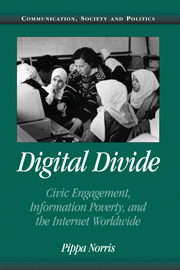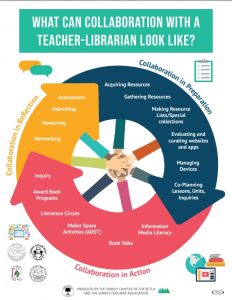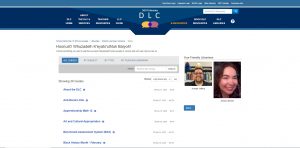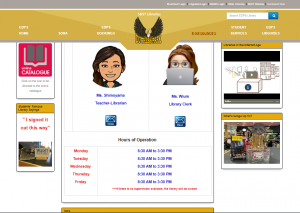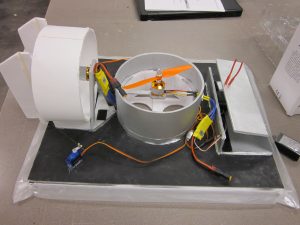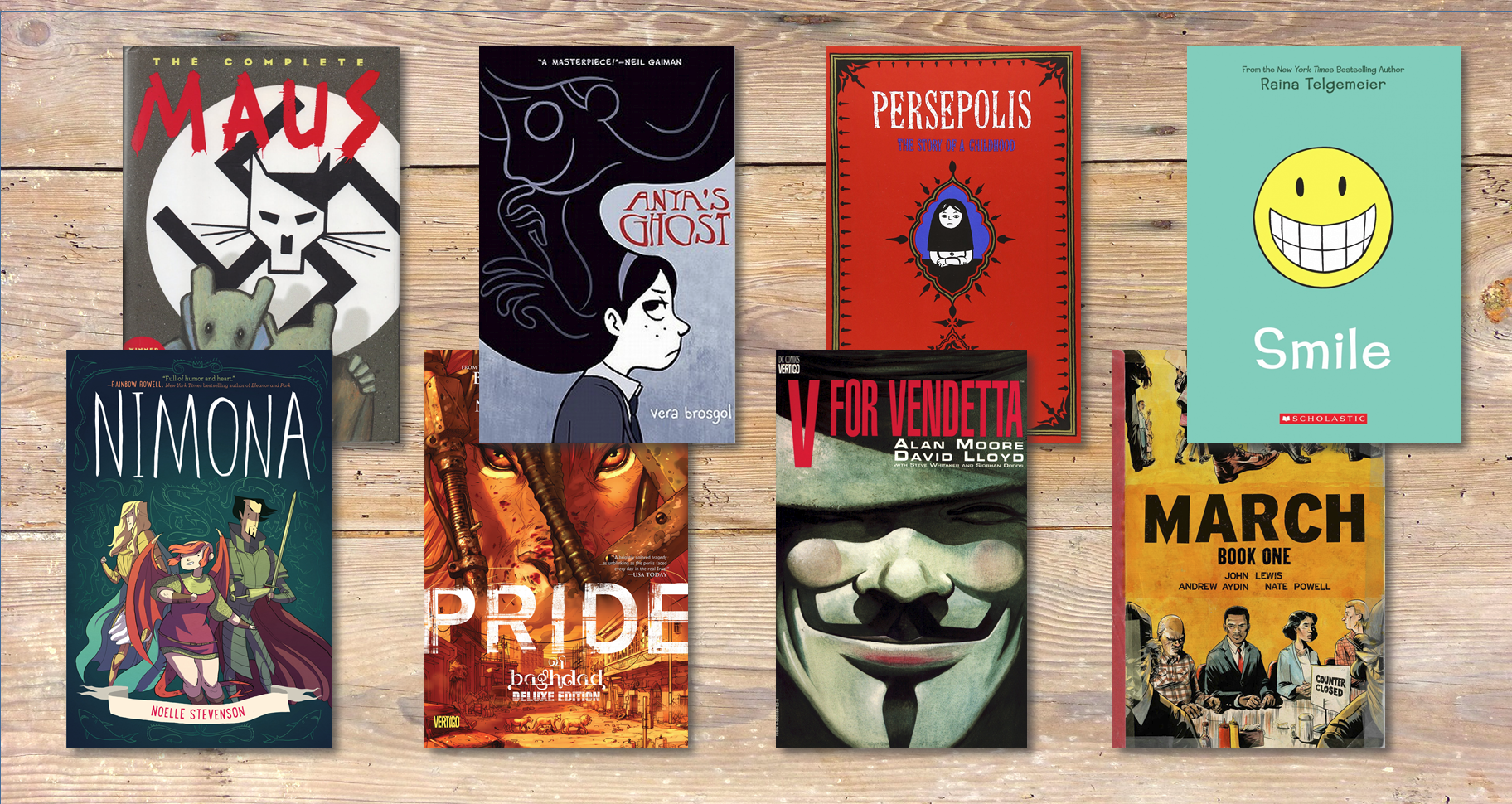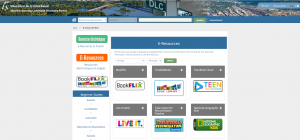Using AI in School:
Final Post
The use of Artificial Intelligence (AI) in school is an increasingly relevant topic for discussion as AI tools become increasingly sophisticated and their use increases. ChatGPT completely changed how AI intersected with education, since it allowed many of the assignments formerly given to students to be completed with a simple prompt. Schools have struggled with how to integrate the new reality of AI while still being centres that promote innovation. This issue will be examined through the linked podcast.
Learning About Libraries Podcast
To examine this issue, I’ve created a podcast titled Learning about Libraries, with a three episode series on the use of AI in the classroom. This podcast will provide listeners with a general background about the topic, explain how AI use can be problematic, and suggest areas where AI can aid in student learning. The podcast format was chosen because the narrative discussion of the topic leant itself to an audio format.
The intended audience for this podcast is other educators, especially those involved in informational literacy like teacher-librarians. This podcast intends to examine the issues involved in AI use in the classroom so that teachers can decide if and how they intend to incorporate it. So far, agencies like the BC Ministry of Education have only released very general statements about the use of AI, saying “choices about the use of AI in the classroom are ultimately made by teachers” (Ministry of Education and Child Care, 2024) without offering more details about the considerations in its use.
The podcast is being hosted on Podbean. Podbean is a free podcast hosting service, and the Learning About Libraries podcast will be available to its user base. It is also possible to send links to this blog and to the podcast episodes to interested users. The free plan allows five hours of hosted content, with unlimited storage space available with a monthly fee. Listeners can leave feedback by commenting on podcast episodes or on this linked blog. Podbean was chosen because it was recommended as the best option in 2024 for “people looking for an all-round podcast service” (Best Podcast Hosting Platforms: 2024 Guide, n.d.).
Podbean
Introduction to AI
This is the first episode in the series, and it serves to provide an introduction to myself, the podcast, and the topic. This includes a brief history about AI, some important definitions, and emerging issues.
Issues with Generative AI Use by Students
This second episode is about how generative AI is frequently being used by students. It explains some issues with generative AI in general, as well as some specific concerns with its use in schools. State of the art and practice in AI in education is used to talk about how AI is used in education, as well as how AI is trained and works (Holmes & Tuomi, 2024). Rising to Meet the Challenge of Generative AI is referenced when discussing the general issues with AI use in education (Scott, 2024).

The sample ChatGPT prompt and response used in Episode 2. A link to the full text is available here.
Podcast 2: Issues with Generative AI Use by Students
Using AI to Further Educational Goals
The third, and last, episode in the series explores how AI can be used to further educational goals. It builds on the second episode, and while examining the issues with its use, examines how AI can be used to increase learning in the classroom.
Podcast 3: Using AI to Further Educational Goals
Reflection
The topic of technology, and generative Artificial Intelligence specifically, is especially pertinent to my practice. The use of AI is currently being discussed in my district, but there has been no strong direction about how it is to be integrated in the curriculum. This course has really developed my knowledge regarding the use of AI, more clearly indicating appropriate uses in secondary education. I also learnt more about the use of technology in other areas. I especially appreciated the module on developing a reading culture. The explorative nature of this course was also interesting. Following other students on their own investigative journeys was compelling. I think my key takeaway from this course is that there is too much expertise related to education for any one person to accommodate. There is a lot knowledge throughout any school community, and the learning of our students can be best supported by tapping into that.
The process to complete my final project went fairly well. The initial project helped begin the work on the final project. It meant that planning and research began at the very start of the course, meaning that the final artifact wasn’t rushed. My work on the final project began with that initial ideation. Throughout this course I kept accumulating and analysing references related to the use of AI, which I then compiled my thoughts on the subject.
Once my thoughts on the subject were developed, I decided on the format of the digital artifact. I chose the podcast form as it well suited to discussion and because I was familiar with audio editing software from my experience volunteering at CIVL Radio (the campus and community radio station I DJed at while completing my undergraduate degree). What issues I had creating my final project were related to the equipment I was working with.
Works Cited
Best Podcast Hosting Platforms: 2024 Guide. (n.d.). https://riverside.fm/blog/best-podcast-hosting
Fearn, N. (2024, May 29). Educators warn AI must be a teaching — not a cheating — aid. Financial Times. https://www.ft.com/content/26ff910a-d19e-444b-9e4c-f06e6d546db3
Government of British Columbia. (n.d.). Social Studies | Building Student Success – B.C. Curriculum. https://curriculum.gov.bc.ca/curriculum/social-studies
Holmes, W., & Tuomi, I. (2022). State of the art and practice in AI in education. European Journal of Education, 57, 542–570. https://doi.org/10.1111/ejed.12533
Hutchison, L. (2021, April 21). Our story. Lheidli T’enneh | First Nation | Prince George, BC. https://www.lheidli.ca/about/our-story/
Kirkland, A. (2017). Models for Technology Integration in the Learning Commons. Canadian School Libraries Journal. https://journal.canadianschoollibraries.ca/models-for-technology-integration-in-the-learning-commons/
Ministry of Education and Child Care. (2024, May 31). Digital literacy and the use of AI in education: Supports for British Columbia Schools – Province of British Columbia. https://www2.gov.bc.ca/gov/content/education-training/k-12/administration/program-management/ai-in-education
OpenAI. (2024). ChatGPT (Apr 29 version) [GPT 3.5]. https://chat.openai.com
Scott, I. (2024). Rising to meet the challenge of Generative AI. Journal of Legal Studies Education, 41(1), 29–37. https://doi.org/10.1111/jlse.12141
UBC Library (n.d.). Research guides: Generative AI and ChatGPT: How to cite. https://guides.library.ubc.ca/GenAI/cite
Wikipedia contributors. (2024, June 10). ChatGPT. Wikipedia. https://en.wikipedia.org/wiki/ChatGPT
Yankell, J. . (2022, December 16). Using Draftback to Detect Copy Paste from AI [Video]. YouTube. https://www.youtube.com/watch?v=rRFmGI3bYWs


